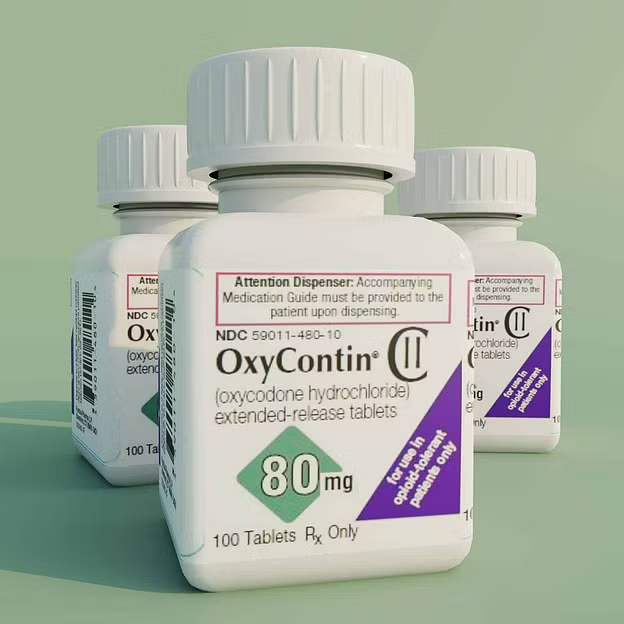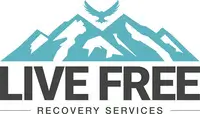OxyContin (Oxycodone Hydrochloride) Addiction Treatment in New Hampshire
If you’re looking for a reliable resource for help in New Hampshire, don’t hesitate to seek expert help from Live Free Recovery Services right away!
OxyContin is the brand name of a potent prescription pain medication that can be immensely helpful for those who suffer from severe pain. However, the drug is also highly addictive and its misuse can lead to devastating consequences.
If you or someone you love is struggling with OxyContin addiction in New Hampshire, this article is here to offer all the guidance you need to find help.
We’ll explore various aspects of OxyContin addiction, including how it develops, its prevalence, and the available treatment options in the state. You’ll also find various helpful resources to help you set foot on the right track.
A Brief Overview of OxyContin and How It Works
OxyContin is the brand name for a prescription pain medication containing oxycodone hydrochloride. Oxycodone is a semi-synthetic opioid, so it functions similar to morphine but it’s around twice as powerful in terms of effect.
The drug is one of the earliest alternatives to morphine, as it was developed in Germany around 1916.
The drug was hailed as a breakthrough for chronic and severe pain management due to its controlled-release model, which allowed for a single dose to provide quick pain relief that lasts for up to 6 hours.
By binding to opioid receptors, it mimics the effects of natural pain relievers produced by the body, called endorphins. This interaction blocks the pain signals between the brain and the body, leading to significant pain relief and a sense of relaxation.
How Does OxyContin Addiction Develop?
Unfortunately, OxyContin’s effectiveness in pain relief comes with a significant risk of addiction. In fact, the drug is heavily regulated and listed as a Schedule II drug under the Controlled Substance Act.

When OxyContin binds to opioid receptors in the brain, it also triggers the release of dopamine, which is a brain chemical associated with pleasure.
The higher concentration of dopamine causes the feeling of euphoria associated with opioid use, which reinforces the brain’s desire to repeat the experience through continuous use.
However, with repeated OxyContin use, the body quickly adapts and becomes tolerant to the drug’s effects. As a result, people end up increasing the dosage of the drug to achieve the same effects.
As OxyContin use continues, the body becomes dependent on its presence to function normally, leading to addiction and experiencing uncomfortable withdrawal symptoms when the drug’s effects wear off, such as:
- Muscle aches
- Headache
- Nausea
- Abdominal cramps
- Seizure (in severe cases)
The continuous loop of tolerance and addiction can lead to devastating effects, as it puts individuals at serious risk of OxyContin overdose, which can lead to life-threatening consequences like respiratory depression, coma, and even death.
Is OxyContin Addiction Common in New Hampshire?
Although opioid misuse is quite common all across America, the state of New Hampshire has been hired particularly hard by this type of addiction.
In fact, several reports have been released to study the significant and rapid increase in the rates of opioid addiction in the state.
New Hampshire has one of the highest rates of opioid-related deaths per capita in the United States, as it accounts for 87% of all drug overdose deaths, which is significantly higher than the national average.
Besides oxycodone’s dangerous effects, it can also lead to using more potent and deadlier opioids, such as fentanyl and heroin.
This is not a recent issue either, as a 2003 drug threat report shows that oxycodone addiction rates have increased by over 204% in the span of 5 years.
It’s also important to note that anyone can develop OxyContin addiction, even with a legitimate prescription. That’s why following the doctor’s instructions and reporting any early signs of dependence is crucial to minimize the risk of addiction.
Factors That Lead to OxyContin Addiction
OxyContin addiction is rarely the result of a single factor, as it’s usually the result of complex and interconnected factors.
In this section, we’ll take a closer look at some of them to understand how oxycodone addiction develops:
Self-Medication and Ignoring the Prescription’s Instructions
Unlike many illicit drugs that have no medical uses, OxyContin is a highly effective prescription-only pain medication. For that reason, a lot of people may misuse the drug to self-medicate for pain or stress without a prescription.
In fact, even patients with a prescription are at a high risk of addiction if they ignore the dosage recommendations by the doctor, whether by increasing the dose, taking the drug more frequently, or not stopping the drug after the specified period.
Genetic Predisposition to Oxycodone Addiction
Some people are more genetically predisposed to opioid addiction than others. In other words, their bodies develop tolerance and dependence in the presence of the drug much faster or with a stronger grip.
History of Drug Abuse
Studies show a correlation between personal/family history and opioid addiction. For instance, individuals with a personal or family history of drug abuse are statistically more likely to suffer from OxyContin addiction.
Exposure to Opioids at a Young Age
Research shows that age has an impact on the risk of addiction, as starting opioid use at a young age significantly increases the risk of addiction later in life. Studies believe that brains at developing stages are more likely to give in to external chemicals, such as oxycodone.
Additional Environmental and Social Factors
Besides the previous aspects, additional factors can also create a fertile ground for addiction to thrive, such as:
- Poverty
- Unemployment
- Peer pressure and being involved in circles that consume drugs
- Lack of support and parental neglect
- Suffering from trauma
- Co-occurring mental health conditions like anxiety and depression
What Does OxyContin Addiction Look Like?
OxyContin addiction is associated with a variety of symptoms, which develop quickly and can affect multiple aspects of a person’s life. Here’s a quick look at the most significant ones.
Physical Symptoms
- Slurred speech
- Having difficulty focusing on tasks
- Weight loss due to lack of appetite
- Lack of coordination
- Slow reflexes
- Excessive fatigue
- Shallow breathing
Behavioral Signs
- Taking OxyContin in larger doses or for longer than prescribed
- Using OxyContin in ways other than prescribed, such as crushing it and snorting it
- Doctor shopping to get multiple prescriptions for OxyContin
- Preoccupation with seeking OxyContin and ignoring activities that were once enjoyed
- Withdrawal from social obligation and isolation
- Secretive or suspicious behaviors
OxyContin Addiction Treatment Options
Now that you know more about OxyContin addiction, here’s a quick look at some of the most effective treatment methods to consider.
Detox
Detox is short for detoxification, which is the first step in the treatment of substance use disorder. In this stage, Oxycodone and its metabolites are completely purged from the body.
OxyContin detoxification is usually done under medical supervision to manage the intense withdrawal symptoms associated with this stage.
Since individuals need medical attention around the clock during that period, patients usually remain in the rehabilitation facility for the entire period.
However, in mild cases, patients might be allowed to return home every night after treatment, which is called “outpatient treatment”.
Medication-Assisted Treatment
Medication-assisted treatment offers a more comprehensive approach to dealing with opioid addiction.
It includes the use of special medications in combination with therapy and counseling to increase the overall efficacy of the treatment. Some of these medications include:
- Methadone: Alleviates the effects of withdrawal symptoms associated with opioid addiction
- Naltrexone: Reduce opioid cravings by blocking the opioid receptor
- Buprenorphine: Reduce the potency of withdrawal symptoms by interrupting pain signals between the body and the brain
Behavioral Therapy
Therapy is the core treatment of addiction after detoxification, especially individual therapy which works on identifying the underlying causes of addiction and finding healthier methods to address them.
One of the popular individual therapy methods used here is cognitive behavioral therapy (CBT), which helps patients pinpoint triggers and negative thought patterns to replace them with positive ones.
Behavioral therapy may also include dialectical behavior therapy (DBT) which helps patients achieve self-control to avoid giving in to triggers.
Group Therapy
Group therapy provides a safe and supportive environment for people to share their experiences with addiction.
This allows them to overcome isolation, learn from each other, and foster a healthy sense of community.
Family Therapy
Family therapy is often recommended during addiction treatment to address the damage that addiction inflicts on families.
It can also be a safe and controlled environment where members of the family can communicate to fix existing problems that can trigger substance abuse or relapse.
Halfway Homes
Also known as “sober living homes”, these are structured and regulated accommodations for people who are transitioning from lengthy inpatient treatment to independent living.
The stress and trigger-free setting in these homes makes them ideal for those who have recovered but aren’t ready to fully return to their daily lives.
Conclusion: Finding Help
Overcoming OxyContin addiction is a challenging journey, but the options listed in this guide provide a strong foundation for recovery.
Remember, each person’s path is unique. To create the most effective treatment plan and maximize recovery chances, seeking guidance from a qualified addiction professional is essential.
If you’re looking for a reliable resource for help in New Hampshire, don’t hesitate to seek expert help from Live Free Recovery Services right away!
Did this article answer your questions?
"*" indicates required fields
Take the First Step Towards a Brighter Tomorrow
At Live Free Recovery, we’re committed to walking alongside you on every step of your journey. Our compassionate team is here to provide the guidance and support you need to overcome addiction and reclaim your life. Don’t wait—reach out today to speak with someone who truly understands your struggles and can help you take that important first step toward healing and a fresh start.
Your path to recovery starts here.
